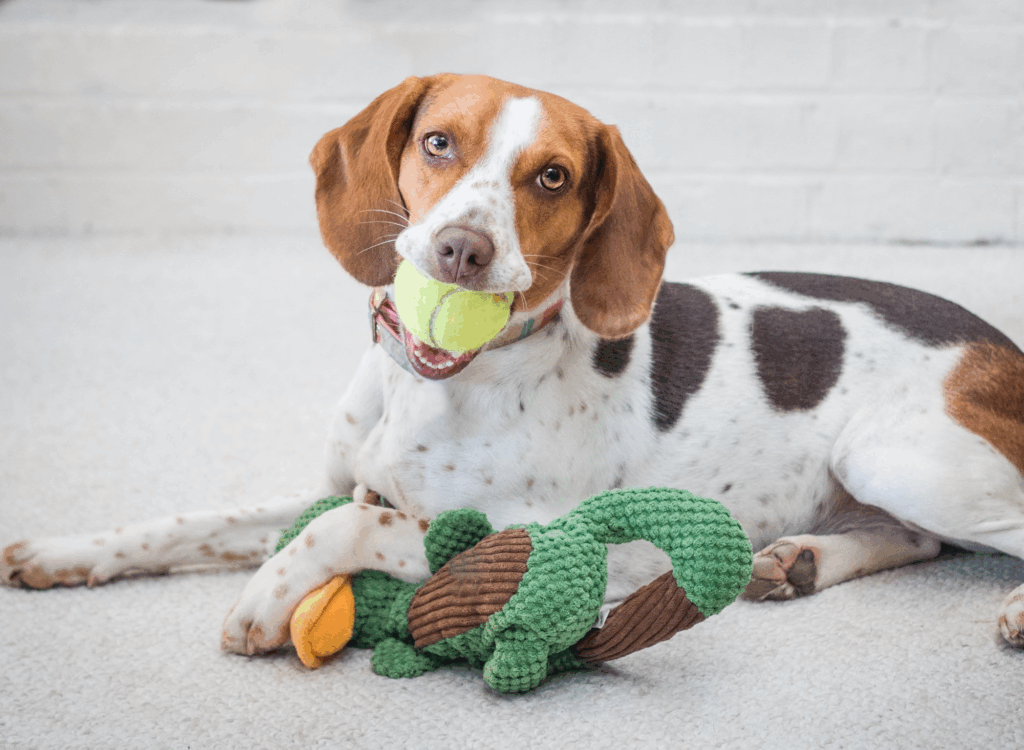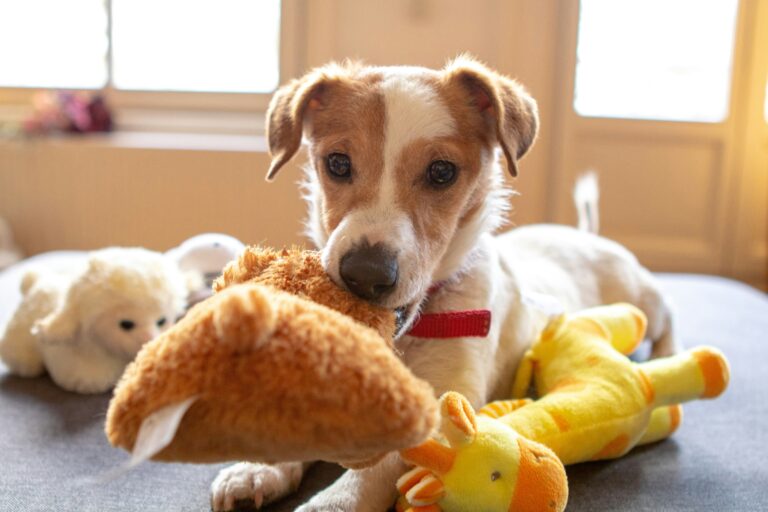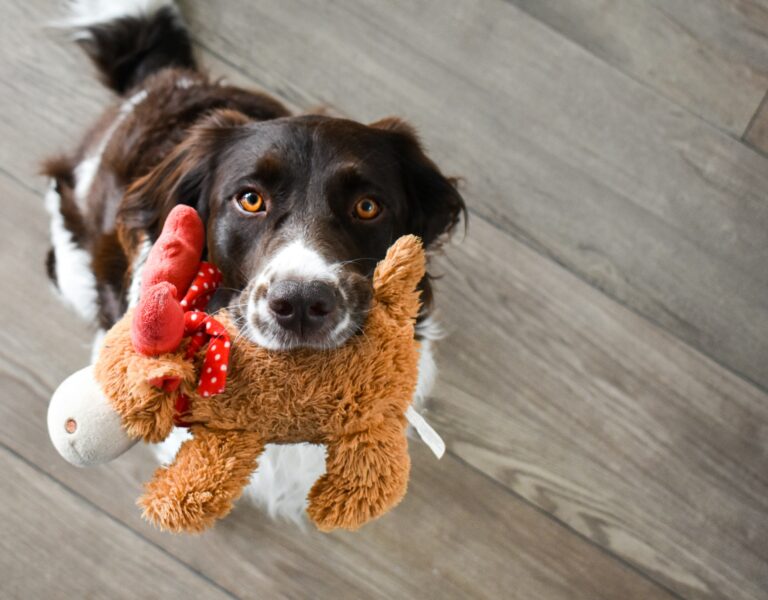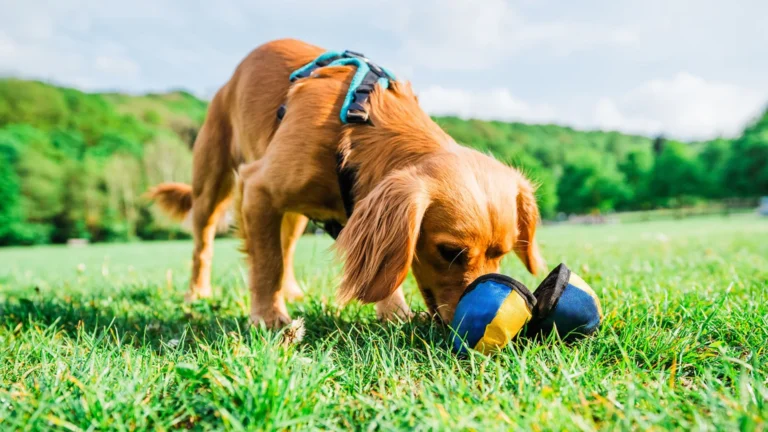Dive into the world of fun-filled, small breed-specific toys that make playtime a joy for your pint-sized pet. The array of available options can be overwhelming, but this comprehensive guide will navigate you through the bustling landscape of pet toys. Toys are not only fun accessories but also tools that stimulate your pet’s mental and physical health. Read on to explore how to select the perfect plaything that matches your pet’s size, personality, and play style.
Each small breed has unique needs when it comes to playtime. Therefore, this guide is set to provide an insightful understanding of what toy features are essential for various breeds. From Chihuahuas to Pugs, from Terriers to Dachshunds, every breed’s preferences and safety requirements will be discussed in detail.
The selection process of a toy goes beyond just size. The durability, material, and even the color of a toy can have a significant impact on your pet’s interest and interaction. This guide aims to provide you with a wealth of knowledge on these factors to ensure you can provide a safe, engaging, and entertaining environment for your small breed.
Stay tuned to uncover the benefits of different types of toys, from chew toys that promote dental health to interactive toys that help combat boredom. This guide will also highlight some of the best-rated toys in the market to help make your shopping process easier. Whether you are a new pet parent or a seasoned one, this guide promises to equip you with the knowledge needed to make an informed toy choice for your small breed. 🐾🐕🦺🧸
Understanding the Unique Needs of Small Breeds
When it comes to selecting toys for small breeds, it is vital to understand that not all playthings are created equal. Small breeds have unique needs and characteristics that make certain toys more suitable than others. Size is, of course, a major factor, but it is not the only one. These breeds’ physical attributes, such as their strength, agility, and mouth size, also play a significant role.
In addition, small breeds often have specific personality traits. For instance, many are incredibly energetic and require toys that can withstand their hyperactive playtime. Similarly, they might be more prone to anxiety and thus benefit greatly from comfort toys that provide emotional support. Toys should be selected with these behavioral tendencies in mind to ensure that the dog’s needs are fully met.
Certain breeds, like Chihuahuas and Pomeranians, might favor toys they can carry and cuddle with, while more active breeds like Jack Russell Terriers may prefer toys that encourage more vigorous play. Understanding these differences helps in making more informed and tailored toy selections.
The Importance of Size-Appropriate Toys
Size is one of the most critical aspects when choosing toys for small breeds. Toys that are too large may be difficult for small dogs to grasp, pick up, and carry. This can lead to frustration, boredom, and eventually disinterest in the toy. On the flip side, toys that are too small can be extremely dangerous. Small toys pose a serious choking hazard, especially if they can fit entirely inside a dog’s mouth.
Choosing toys that fit comfortably in your dog’s mouth is essential. The toy should encourage natural behaviors like chewing, fetching, or cuddling without posing any safety risks. Size-appropriate toys help promote confidence during play and ensure that your pet can engage safely and happily.
Another factor to consider is weight. Lightweight toys are generally more suitable for small breeds, making it easier for them to carry, toss, and retrieve during play sessions.
Types of Toys Suitable for Small Breeds
Small dogs enjoy a variety of toys, but not every toy is appropriate. The key is to choose toys that cater to their physical and mental needs while ensuring safety and engagement.
Interactive Toys
Interactive toys are excellent for small breeds because they offer both mental and physical stimulation. Toys that incorporate treat-dispensing features or puzzle-solving elements are fantastic for keeping a small dog’s mind sharp. These toys challenge your pet to think, strategize, and solve problems, which can help prevent boredom and reduce anxiety-related behaviors.
Examples of interactive toys include puzzle boards, treat balls, and hide-and-seek plush toys. These toys not only engage the dog’s intelligence but also provide positive reinforcement in the form of treats, making the play experience even more rewarding.
Interactive toys are especially beneficial for breeds that are highly intelligent and prone to boredom, such as Miniature Poodles and Papillons.
Chew Toys
Chew toys are essential for the dental health and emotional satisfaction of small breeds. Many small dogs are avid chewers, and providing appropriate outlets for this natural behavior can prevent destructive chewing on furniture or household items.
The right chew toy can help maintain healthy teeth and gums by reducing plaque buildup and massaging the gums. Toys made of durable, non-toxic rubber or tough nylon are great choices for small dogs with strong jaws. Textured surfaces and nubs can enhance the dental benefits of chew toys by cleaning teeth more effectively during chewing.
Chew toys also help small dogs manage stress and anxiety, providing a calming and self-soothing activity that can be particularly valuable when the dog is alone at home.
Plush Toys
Plush toys are favorites among many small breeds due to their soft texture and comforting nature. These toys often become a small dog’s cherished companion, providing both entertainment and comfort. Plush toys can also be used for games of gentle fetch or as bedtime companions.
When selecting plush toys, it is crucial to choose models made specifically for small dogs, featuring strong stitching and safe, non-toxic materials. Avoid plush toys with small parts like buttons or beads, which can become choking hazards.
Plush toys are particularly appealing to breeds like Maltese and Yorkies, who often enjoy carrying soft items around or snuggling with them during naps.
Quality and Durability of Toys
Small breeds might be diminutive, but their play style can be surprisingly vigorous. Despite their size, many small dogs are determined chewers and active players. Therefore, the quality and durability of their toys are paramount.
Toys should be made from durable materials that can withstand chewing, tugging, and tossing without falling apart. Toys that are poorly made or feature weak stitching can break easily, posing serious health risks if ingested.
Investing in high-quality toys not only ensures the safety of your dog but also saves money over time, as these toys will last significantly longer than their cheaper counterparts.
Materials to Look For
Selecting toys made from appropriate materials is another critical step in ensuring your small breed dog’s safety and enjoyment.
Natural Rubber
Natural rubber is a popular material for dog toys because it is tough yet flexible. It can endure strong chewing while remaining safe for a dog’s teeth and gums. Rubber toys often come in a variety of shapes and designs, including balls, bones, and puzzle feeders.
Durable Nylon
Nylon toys are another excellent choice, particularly for small breeds that are aggressive chewers. Nylon is incredibly strong and can handle intense chewing sessions. Look for toys specifically designed for dental health, as many nylon toys have textured surfaces that clean teeth while the dog chews.
Non-Toxic Fabrics for Plush Toys
When choosing plush toys for small breeds, one of the most important factors to consider is the type of fabric used. Non-toxic fabrics are essential to ensure the health and safety of your pet. Dogs often chew, lick, and sometimes tear apart their toys, which means they are in constant contact with the materials. Exposure to toxic substances through poor-quality fabrics can lead to health issues ranging from mild allergic reactions to serious internal complications.
Many manufacturers now prioritize the use of eco-friendly, organic, or hypoallergenic fabrics in the production of pet toys. These materials are less likely to cause irritation to dogs with sensitive skin or allergies. Organic cotton, bamboo fibers, and recycled polyester are common examples of safer alternatives that promote environmental sustainability while protecting your pet’s health.
It is important to avoid toys with strong chemical odors, bright synthetic dyes, or materials that feel overly stiff or coated. Such features can be indicators of chemical treatments that may not be safe for chewing and regular handling. Always choose toys from reputable brands that explicitly state their commitment to pet-safe materials.
The Importance of Reinforced Seams
Another critical element in selecting toys for small breeds is ensuring that the toy features reinforced seams. Small dogs, despite their size, can be surprisingly vigorous when they play. Without strong stitching, toys can quickly tear apart, exposing stuffing or small internal components like squeakers.
Reinforced seams involve double or triple stitching that secures the toy’s structure and minimizes the risk of breakage. When a toy is double-stitched, it can withstand pulling, biting, and rough play much better than a toy with a single line of stitching.
Choosing toys with reinforced seams extends their longevity and reduces the frequency of replacement. It also contributes significantly to your dog’s safety by preventing them from accidentally ingesting materials that should remain inside the toy. Well-constructed toys offer peace of mind, allowing your dog to enjoy playtime with less risk.
Supervision and Toy Rotation
Even the safest and most durable toys require supervision during use. Regular monitoring ensures that any wear and tear are noticed early, reducing the chance of accidents or ingestion of small parts.

Supervised playtime allows you to engage directly with your dog, strengthening your bond and providing opportunities for positive reinforcement. Watching your dog’s interaction with different toys can also give you valuable insights into their preferences and behaviors.
Toy rotation is an excellent strategy to maintain your dog’s interest in their toy collection. By periodically removing and reintroducing toys, you keep the play experience fresh and exciting. This tactic can prevent boredom, which often leads to destructive behaviors. It also provides you with the chance to clean and inspect toys thoroughly before putting them back into rotation.
Rotating toys based on type—for example, switching between chew toys, interactive puzzles, and plush toys—helps maintain a balance of mental stimulation and physical activity. Keeping your dog mentally challenged through varied play helps reduce anxiety and promotes healthier, happier behavior overall.
Safety Considerations When Choosing Toys
Safety must always be the number one priority when selecting toys for small breed dogs. No toy is worth the risk of endangering your dog’s health. Ensuring that toys are free from choking hazards, made from non-toxic materials, and suited to your dog’s size and strength is crucial.
Beyond the basics, it is wise to consider the dog’s behavior during playtime. Some dogs are gentle chewers, while others are aggressive and determined to dismantle every toy they encounter. Understanding your dog’s chewing style and energy level helps you make better decisions about which toys are most appropriate.
Safe toys should not have any detachable parts like eyes, noses, or bows, especially if they are glued rather than sewn. Internal squeakers should be securely encased and inaccessible even if the outer layer is damaged. Hard plastic or brittle materials should be avoided unless they are certified as chew-safe.
Another safety factor is ease of cleaning. Toys that can be easily washed help maintain hygiene and prevent the build-up of bacteria, mold, or allergens that could harm your dog’s health over time.
The Value of Supervised Playtime
Supervised playtime offers multiple benefits beyond ensuring safety. It allows for real-time interaction and can help redirect any undesirable behaviors immediately. It also creates an opportunity for training moments, where you can teach your dog commands like “drop it” or “leave it,” which are useful for managing toys and ensuring they are used properly.

Supervision also means that you are there to intervene if a toy breaks apart. Immediate removal of broken toys can prevent accidents like ingestion of stuffing or plastic parts. Early intervention preserves your dog’s health and prevents costly emergency vet visits.
Even if your dog typically plays safely on their own, regular check-ins during independent play sessions are recommended. Being proactive rather than reactive keeps playtime safe and enjoyable.
Understanding Your Dog’s Individual Preferences
Finding the right toys for your small breed dog requires a good understanding of their individual preferences. Dogs, like humans, have their own personalities and quirks. Some may prefer soft, cuddly toys that they can snuggle with, while others may thrive on the challenge of puzzle toys or the satisfying resistance of durable chew toys.
Observe your dog’s play style carefully. Are they gentle, or do they like to shake and thrash their toys? Do they get bored easily, or can they spend hours chewing on a single toy? Tailoring your toy selection to fit these behaviors can make a significant difference in how much your dog enjoys and benefits from their toys.
If your dog tends to lose interest in toys quickly, introducing more interactive options, such as toys that dispense treats, might reignite their enthusiasm. Conversely, if your dog becomes overly fixated on a particular toy to the point of obsession, it may be necessary to limit access to that toy and offer alternatives to diversify their engagement.
Age is another important consideration. Puppies may need softer toys to soothe teething discomfort, while adult dogs might require tougher toys to satisfy more powerful jaws. Senior dogs may benefit from softer, more easily manipulated toys to accommodate aging teeth and joints.
Choosing the right combination of toys ensures that your dog remains physically active, mentally stimulated, and emotionally satisfied at every stage of their life.
Conclusion
In summary, finding the ideal toys for small breed dogs doesn’t have to be a daunting task. It’s all about knowing your furry friend’s preferences, considering their safety, and keeping their size in mind. Remember, the right toy is not only fun for your pet but also aids in their mental and physical development. High-quality, durable toys are worth the investment, keeping in mind that their safety and enjoyment is paramount.
Consider interactive toys that stimulate their intellect and keep them engaged. Choosing age-appropriate toys is equally essential to ensure they match your dog’s energy levels and abilities. Toys that are too small can pose a choking hazard, while those that are too large may not be fun for your pint-sized pal.
Always keep an eye on your pet while they’re playing, and replace any toys that become worn or broken. In a nutshell, the perfect toy for small breeds is one that keeps them entertained, promotes healthy chewing habits, and fits comfortably in their little mouths. Finding the right toy can make playtime a fun, safe, and enriching experience for your small breed dog. Remember, a happy pet means a happy home! 🐾🏡🐶



